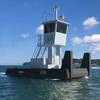As Belgium became the 48th signatory party this week, the Ballast Water Management Convention has now almost gained sufficient ratification to come into force, and will do so in 2017, reports UK Chamber of Shipping.
The remaining 0.18% tonnage will not be difficult to meet within the next one or two months, introducing the industry to a tsunami of compliance costs and uncertainties.
The complexity of the issues that underlie the Convention, which has faced and continues to face stubborn criticism, means that the slow progress in ratification is hardly surprising.
Member States have now finally realised that the implementation of the Convention is harder than they initially thought 12 years ago, with some of them having adopted a cautious ‘’wait and see approach’’.
There are a host of amendments that need to be agreed prior to its entry into force and time is limited. Everyone will be eager and anxious to work towards finalisation during the two IMO meetings in April and October this year.
Time is of essence for the industry to properly plan, but there is no reassurance of when and on whether any proposed amendments will happen. In the light of regulatory uncertainty, some shipowners have reasonably decided to complete their IOPP renewal survey, ahead of the original survey schedule to subsequently postpone the installation of treatment systems on their vessels as much as possible once the Convention is in force.
But concerns have been raised that this will likely result in a bottleneck in 2020 as dockyard and classification society capacity may not be enough.
The uncertainty is not only associated with the IMO’s pending legislation but also with the US’s unhelpful position on the dead/live criteria. It is believed that the US position will define the future of the effective implementation of the Convention.
The lack of USCG type approval systems is a major obstacle to decision making for the industry and even a potential game-changer. And if that is not enough, the US veto on the ‘’grandfathering clause’’ makes is extremely difficult to see light at the end of the tunnel. Some may argue that US is the only country who has decided to move in an antithetical direction, but who is willing to gamble with millions of dollars and exclude it from its trading area.
Once the Convention is in force the industry will face hard decisions. As the industry is facing one of its worst market situations, the decision on which system to fit can be critical for survival.
Yet, despite the life or death stakes, the US so far does not seem to have stepped back and accept UV systems. Almost half of the available IMO approved systems use UV technology.
A solution to the problem has been proposed by Liberia in a paper that will be discussed at the IMO MEPC in April, where it asks for a relaxation of the Convention’s schedule.
The stakes are high for short sea shipping as well, as the industry is eager for a pragmatic solution at the next IMO meeting.
Building on the progress made at the last meeting, the sector has placed all its hopes to the ‘’same risk area’’ concept, which seems to be easier to administer for all parties.
There is no doubt that the IMO meeting in April is crucial. No one disputes that the Convention is needed, but for the chaotic Convention to work, sensible and bold decisions are needed.
The IMO shall not disregard the concerns raised, but shall provide effective means to assist in building confidence. The requirements need to be proportionate, current and not panic the industry. But allow it to navigate safely through this tumultuous Convention to meet its objectives.












